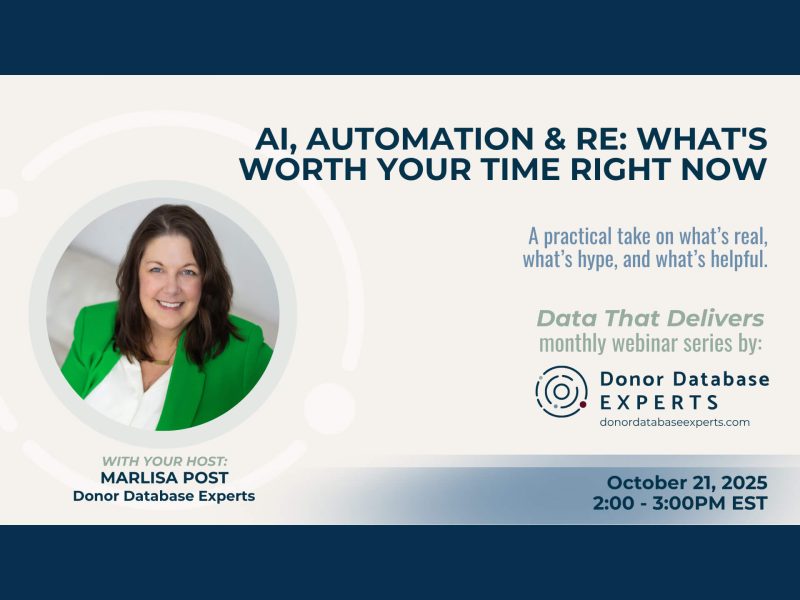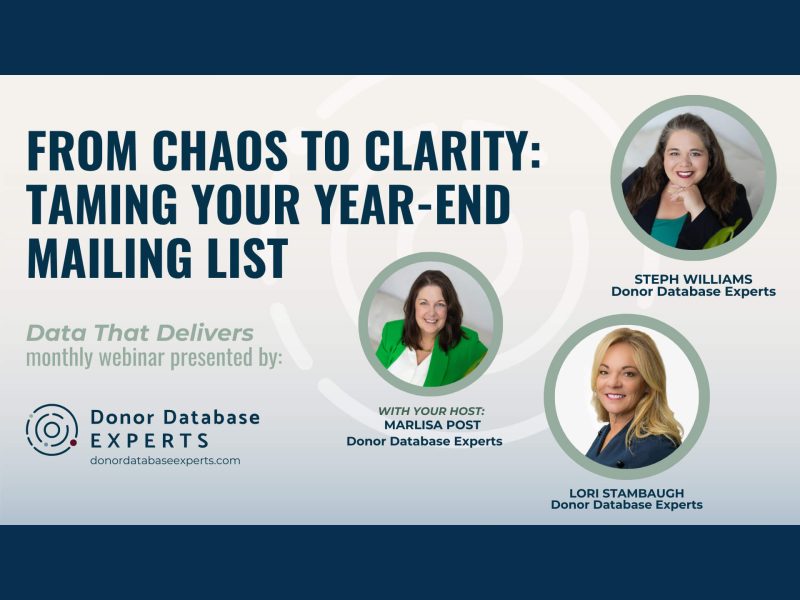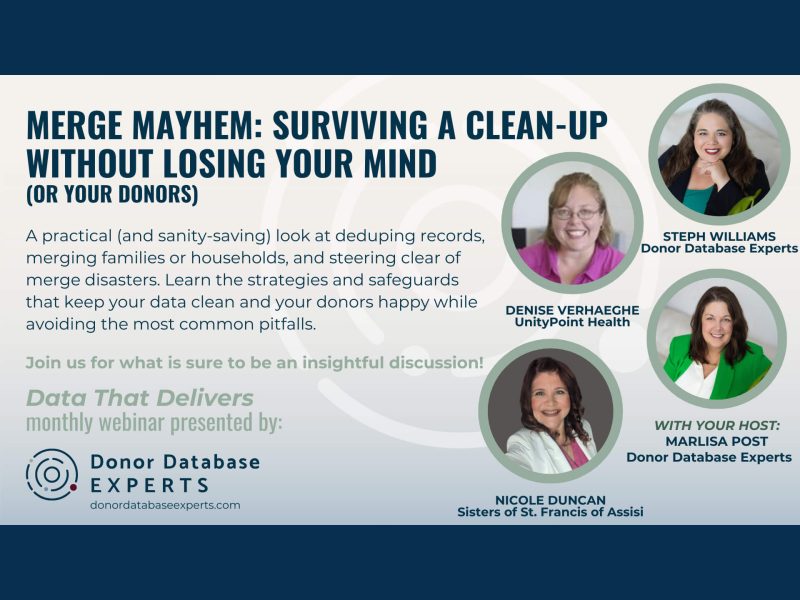What Is a Good Donor Retention Rate for Nonprofits?
For nonprofits, a healthy donor retention rate can mean the difference between thriving growth and constant struggle. While many organizations focus on acquiring new donors, retaining existing ones is far more cost-effective and impactful. But what exactly is a good donor retention rate for nonprofits? And what strategies can you use to improve yours?
This article will explore what donor retention means, how to calculate it, and practical ways to elevate your organization’s retention efforts.
What Does Donor Retention Mean?
Donor retention measures how many supporters continue donating to your nonprofit after their first gift. It’s more than just a metric; it’s a reflection of your organization’s ability to build meaningful, long-term relationships with donors. A high donor retention rate means your supporters trust and believe in your mission enough to stay engaged and keep giving. On the other hand, a low donor retention rate indicates a revolving door of donors, forcing you to spend more resources on constant donor acquisition.
How to Calculate Your Donor Retention Rate
Understanding your donor retention rate is the first step to improving it. Here’s the formula:
Donor Retention Rate = (Number of Donors This Year ÷ Number of Donors Last Year) x 100
For example: If 500 donors gave to your organization last year, and 250 of them donated again this year, the formula would be:
(250 ÷ 500) x 100 = 50%
Your donor retention rate would be 50%.
Regularly tracking your donor retention rate helps you spot trends and identify areas for improvement. Many donor management software platforms also automate this process, saving you time and providing deeper insights.
Current Average Donor Retention Rates
According to data from the Fundraising Effectiveness Project (FEP), the average donor retention rate across nonprofits varies significantly based on donor type:
- New Donors: Only 19.4% are retained year-to-year.
- Repeat Donors: Retention is much higher at 69.2%.
- Lapsed Donors (donors who left but return): Retention drops sharply, with only a small percentage being recaptured.
Industry benchmarks provide valuable context, but the golden rule remains clear: The more loyal your donors, the easier it becomes to maintain sustainable support.
Why Does Donor Retention Matter?
The Cost of Acquiring New Donors
Acquiring new donors is expensive. Studies estimate that it costs five times more to attract a new donor than to retain an existing one. Why? Because the investments in marketing, engaging prospects, and securing that first gift often outweigh the initial donation. If nearly 70% of your donors only give once, you risk operating at a financial loss without a robust retention strategy.
Donor Fatigue and Churn
Nonprofits also face challenges like donor fatigue, where repeated asks or a lack of personalized engagement cause donors to disengage. Fatigue not only weakens the chance of a return gift but also contributes to overall donor churn (the percentage of donors who stop giving). Addressing these issues with thoughtful retention strategies minimizes churn and strengthens connections.
Long-Term Impact
High retention doesn’t just secure your current funding; it creates a base of loyal supporters who increase their contributions over time. Additionally, repeat donors are more likely to become advocates, spreading your mission through word-of-mouth and social proof.
Strategies to Increase Your Donor Retention Rate
Improving donor retention requires targeted, consistent efforts. Below are proven strategies to build stronger bonds with your donors and keep them engaged long-term.
1. Communicate Clearly and Consistently
Donors want to feel connected to your mission. Create regular touchpoints through email updates, social media, newsletters, and phone calls to keep them informed. Share impact stories, statistics, and photos to show how their gifts are making a real difference.
Pro Tip: Personalize all communication. Address donors by name, reference their previous contributions, and tailor messages to their interests.
2. Say “Thank You” Quickly and Often
An overlooked but critical step in donor retention is acknowledgment. Failing to thank your donors promptly can make them feel unappreciated. Send personalized thank-you notes, emails, or even pick up the phone to express gratitude.
Best Practice: Send a thank-you email within 24 hours of receiving a donation. Follow up with a hand-written note or detailed email that highlights how their support is being used.
3. Provide Tasting Notes of Impact
Help donors “taste” the results of their contributions by showing tangible outcomes. For instance:
- “Your $100 donation provided clean drinking water to 50 families.”
- “Thanks to you, we planted 1,000 trees last month.”
When donors understand the direct connection between their contributions and your mission, they’re more likely to continue supporting your cause.
4. Combat Fatigue with Proactive Data Analysis
Donor fatigue can hurt your nonprofit’s success, but data analysis can help keep supporters engaged. Here’s how:
- Track Key Metrics: Use dashboards to monitor donation frequency, email engagement, and retention rates to spot early signs of declining interest.
- Leverage Insights: Analyze donor behavior to:
- Share personalized impact stories
- Automate thank-you notes
- Provide exclusive content
- Strengthen Connections: Celebrate milestones and offer participation opportunities to build trust and retention.
A data-driven approach fosters stronger donor relationships and long-term support.
5. Make Giving Convenient
Offer recurring donation options to simplify future giving. Platforms that securely store payment information or send reminders for expiring credit cards ensure you remain top-of-mind without adding stress to donors. The easier you make it to donate, the higher your retention will be.
6. Use Data to Personalize Engagement
Leverage donor databases to track donor behavior and preferences:
- Donation Trends: Log recurring patterns or donation gaps.
- Event Participation & Engagement: Note who attends events or opens emails.
By segmenting your donors based on this information, you can send targeted, relevant communication that resonates with their unique interests.
Elevating Retention With Expertise
Improving your donor retention rate is challenging, but not impossible. Retaining even 10% more of your current donors can significantly enhance your nonprofit’s financial health and impact. By focusing on strategic communication, meaningful acknowledgment, and data-driven decisions, your organization can build lasting relationships with its donors.
For nonprofits serious about increasing donor retention, partnering with the right experts is essential. At Donor Database Experts, we provide tailored solutions and database expertise to help you track, analyze, and boost retention rates with ease.
Recent Posts

Webinar: AI, Automation & RE

Webinar: Taming Your Year-End Mailing List

